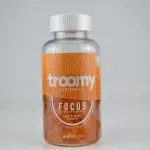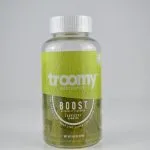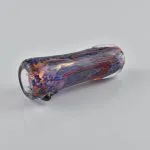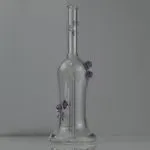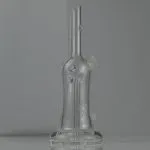Do you need help deciding between Kava vs. Kratom? Have you read about the potential benefits but can’t decide which is best for your needs? Well, don’t fret. I’m here to help! I’ll provide a comprehensive overview of these two compounds so that you can make an informed decision. Let’s dive right in!
Kava and Kratom have been gaining popularity over the past few years due to their ability to promote relaxation and treat various health conditions. However, many people are unaware of their differences and often mistake one for the other.
Both substances come from plants native to Southeast Asia but have different uses and effects on the body. While some similarities exist, key distinctions should be considered when deciding whether or not either substance is suitable for individual use.
In this article, we will compare Kava and Kratom side-by-side to determine which would suit your needs better. We’ll discuss their commonalities and unique qualities so that you feel confident making an educated decision regarding which plant may benefit you personally. Buckle up; it’s time to learn all about these fascinating plants!
Table of Contents:
Definition Of Kava And Kratom
Kava and Kratom are two substances that have become increasingly popular in recent years. But what exactly are they? Let’s take a closer look at the definitions of each to get a better understanding.
Kava is an herbal beverage made from the roots of Piper Methysticum, found on islands throughout the South Pacific. It has sedative, euphoric, and anesthetic effects when consumed responsibly. The Kavalactones in its root can help promote relaxation and reduce stress levels.
Kratom is derived from Mitragyna Speciosa trees native to Thailand, Indonesia, Malaysia, Myanmar, and Papua New Guinea. When taken as directed, it offers mild stimulant effects similar to caffeine or amphetamines but with less risk of addiction. This makes it attractive for those looking for a natural alternative to prescription drugs like Adderall or Ritalin. Additionally, its analgesic properties make it helpful in managing chronic pain conditions such as fibromyalgia or arthritis.
Now that we know what these two substances are, let’s compare them side-by-side so you can decide which one might be right for you!
Effects On The Body
Kava and Kratom may be similar in terms of their origin, but the effects they have on the body are quite different. To understand how these two herbs affect us physiologically, let’s look at what happens when we ingest them.
When ingested, Kava and Kratom interact with our nervous system to produce physical responses. Kava is generally known for its calming effect that can help reduce stress while providing an uplifting feeling.
It does this primarily through promoting relaxation – improving circulation throughout the body, which helps relieve aches or pains caused by tension. This soothing sensation also affects the body’s cardiovascular system and hormone balance, causing metabolic changes that promote a sense of well-being overall.
On the other hand, Kratom is more stimulating than sedating. Its active alkaloids stimulate adrenergic receptors in your brain and cause increased energy levels – though not necessarily to the same extent caffeine does.
In addition to this energizing boost, users report improved focus, productivity, and better moods during use due to interactions with serotonin receptors. However, if used excessively, there is potential for addiction, so caution should be taken when consuming this herb!
In short, depending on your goals or desires, you could choose either Kava or Kratom, each having unique physiological impacts on our bodies that make them suitable for various situations or experiences.
Kava Bars: The New Trend Taking Over Social Life – Find Out What You’re Missing!
Potential Benefits
Moving on from the body’s response to Kava and Kratom, let’s delve into the potential benefits each can offer. Kava is primarily known for its ability to relax muscles and reduce anxiety levels. This makes it an excellent choice for those seeking relief from stress or social situations without feeling drowsy afterward.
Additionally, some people have reported an uplift in mood following the consumption of this root-based drink. Moreover, since most of these effects are achieved through relaxation rather than sedation, they tend to be long-lasting with no unpleasant side effects compared to other remedies, such as pharmaceutical drugs.
On the flipside, Kratom is used mainly as a pain reliever or energy booster – both short-term and long-term depending on the dose size consumed. It has been found to help alleviate chronic pain caused by arthritis, headaches, and muscle spasms due to its natural anti-inflammatory properties.
Furthermore, many users find that consuming small amounts of this plant-derived stimulant helps improve focus while providing an additional energy boost when needed. Besides reducing physical ailments like joint aches and migraine headaches, Kratom may also provide psychological benefits such as improved concentration and mental clarity.
Whether you’re using either one for health purposes or just enjoy their unique taste profiles – both Kava and Kratom have something special to offer! From calming anxieties with Kava’s soothing nature to energizing your day with the stimulating effects of Kratom – there’s no doubt that both these ancient beverages have powerful healing capabilities that deserve further exploration.
Apart from their medicinal applications, it’s essential not to overlook the remarkable capability of natural compounds found in certain plants to provide comfort during times of stress. These plants can effectively ease symptoms such as insomnia or restlessness caused by tension.
Plants have been shown to improve sleep quality and combat depression, often associated with anxiety. By promoting balanced emotions and achieving optimal hormonal balance, plants can enhance overall well-being and help us experience life to the fullest.
Shocking revelation: Kratom’s secret drug test loophole exposed – you won’t believe the results!
Side Effects
The effects of Kava and Kratom on the body can be quite different. Comparing the two shows us that there is a chance for side effects to occur with either one, although they may manifest in different ways.
Let’s look at Kava: The use of this plant has been linked to mild headaches or nausea as well as potential dizziness or liver damage if taken in excess. While these are not severe issues, it is essential to understand what you might expect when consuming any substance.
On the other hand, we have Kratom, which may lead to feelings of jitteriness and restlessness if consumed too frequently. It also could cause more serious reactions, such as anxiety or depression, over time due to its potency. In addition, people who take higher doses than recommended can experience nausea, vomiting, and other minor symptoms like dry mouth or constipation.
Both substances should be approached cautiously – understanding what your body can handle is vital! For those looking into trying either Kava or Kratom:
- Start with small amounts; increase gradually if needed.
- Be mindful of how often you take them – spread out consumption days so your body doesn’t become overly reliant on the substance.
- Pay attention to how each makes you feel – listen to your body and know when enough is enough!
Preparation And Consumption Methods
Regarding preparation and consumption, Kava and Kratom offer different methods. Kava brewing is the traditional way of preparing this root beverage. It involves grinding or pounding the fresh or dried roots into a powder-like consistency, then adding water and straining them before drinking. Recipes vary depending on the region and cultural preferences but typically involve coconut milk or other dairy products and honey for sweetness.
Kratom can be consumed in several forms, including powder, tea, capsules, extracts, tablets, and gum. The most popular form is a powdered leaf mixed with hot water to make a tea-like drink. Some users also like to add flavors such as lemon juice or honey for taste enhancement.
Capsules are gaining popularity because they come in premeasured dosages, and you can take them anywhere. Extracts are used by experienced users who want stronger effects from smaller doses than what can be achieved by consuming raw leaves or powder alone.
Tablets are made from concentrated extractions of various alkaloids within the plant material. Gums are created using resins extracted from the leaves, which contain some of these same alkaloids found in kratom powder teas and capsules.
No matter how you consume your Kava or Kratom, consider safety when experimenting with different recipes and dosage levels. Start small until you find something that works best for you – both physically and mentally!
Appropriate Dosage
When dosing Kava and Kratom correctly, the most important thing is safety. Knowing the recommended dosage for both can help you determine how much is too much. Kava has a reputation as being one of the safest herbal supplements available, but that doesn’t mean there’s no risk associated with taking it. The safe dose of Kava ranges from 70-250 mg per day for adults.
Kratom is an evergreen tree native to Southeast Asia, and its leaves have been used medicinally for centuries. It’s been used recreationally recently, but caution must be taken when consuming this powerful plant medicine. Recommended doses of kratom range from 2-10 grams, depending on your desired effects and tolerance level. Taking more than 10 grams could lead to unpleasant side effects such as nausea or vomiting.
To get the most out of your experience without any nasty surprises, follow proper dosage instructions for both Kava and Kratom—the right amount will ensure you have a positive experience every time!
Risks And Warnings
Having discussed the appropriate dosage for Kava and Kratom, it’s time to dive into their risks and warnings. First off, let’s look at Kava addiction. Although there is some evidence that Kava can be addictive when taken in high doses or over a long time, its addiction potential has been greatly exaggerated.
Kratom does have an extremely high risk of becoming physically dependent if abused regularly. It’s also important to consider possible kratom-overdose symptoms such as nausea, vomiting, confusion, drowsiness, and respiratory depression, which can occur with high doses or chronic use.
Next, we’ll explore interactions between these two substances. Both drugs have mild interactions with certain medications, including benzodiazepines and opioids. Additionally, alcohol should never be mixed with these substances due to potentially dangerous side effects.
Regarding safety measures for taking both medications, it is crucial to comprehend their potential interactions to mitigate any adverse health effects that may arise from concurrent use. For instance, an imbalance of neurotransmitters in the brain may result in heightened anxiety or reduced focus levels. Therefore, understanding how the drugs interact with each other can aid in preventing such outcomes.
Therefore, individuals must take caution when considering taking either one or both of these substances since even small amounts could lead to severe adverse reactions if combined improperly.
Final Thoughts
The debate between Kava and Kratom is an ongoing one. Both substances have many advantages that can benefit a person’s health when used appropriately and in moderation. However, it is important to understand that each substance has risks and potential side effects.
Overall, both Kava and Kratom can offer numerous potential benefits if used correctly; however, safety must always come first to enjoy these natural supplements without risking health. As such, anyone considering using either substance should do their research thoroughly.







